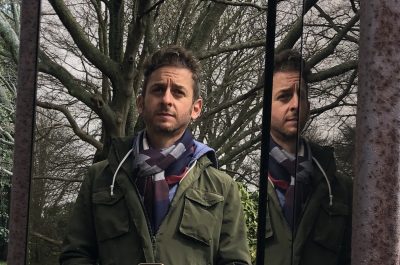“Black Rabbit” Creators Zach Baylin and Kate Susman on Cooking Up Their NYC-Set Thriller
Netflix’s hit series Black Rabbit brings viewers into the vibey, chaotic world of New York City nightlife in a breathless eight-episode sprint that left this viewer spent and satisfied, like after a particularly long and indulgent night in the city it lovingly, if somewhat dementedly, portrays. Starring Jude Law and Jason Bateman as Jake and Vince Friedken, respectively, brothers who try to slough off a particularly rough upbringing by opening the titular Black Rabbit restaurant together, the series is a showcase for their considerable acting chops, but also for the kind of nervy New York-set thrillers that creators Kate Susman and Zach Baylin grew up loving.
Susman and Baylin, former New Yorkers themselves and real-life partners, were adamant about having their series filmed on location in New York. The series opens with Jake now in full command of a seemingly unstoppable restaurant scene at the Black Rabbit, where reservations are near impossible to come by and guests on the first floor are jealous of those in the private club on the third. Enter Vince, returning to New York a wounded, haunted older brother looking for some purchase on a life gone decidedly south. Over the course of eight episodes, the brothers’ dreams of becoming big machers in the Big Apple finds them ranging across the city, from the South Seaport where the Black Rabbit is located, to Coney Island, where they grew up and Vincent has returned, to the 10th Street Russian & Turkish Baths in the East Village, where the mobsters Vince still owns money to operate their business.
The series is a kind of greasy, tear-soaked love letter to the city itself, and Baylin and Susman, along with key members of their team, including location manager (and native New Yorker) Paul Eskenazi, drew from their own experiences to create a world that earns its New York City bona fides.
We chat with Baylin and Susman about shooting in real New York locations, their collaboration with Law and Bateman, and the bittersweet ending that has left viewers reeling. Spoilers below.
Looking back at the reception the show has received, how does it feel to finally have this out in the world after working on it for so long?
Kate Susman: We lived in New York for 20 years. The idea for this show germinated from living there, and then it actually crystallized into a pitch, a script, and a shoot. We’ve been waiting for so long for it to come out. We just wanted everyone to see it. It feels so close to us and our experience. I think it’s a side of New York that not everyone gets to see, and it’s kind of representative of the things that we loved there and the kind of shows that we like to watch. So it’s been a total thrill. We’re beyond happy with the reception that we’ve gotten and that it’s connecting with people.
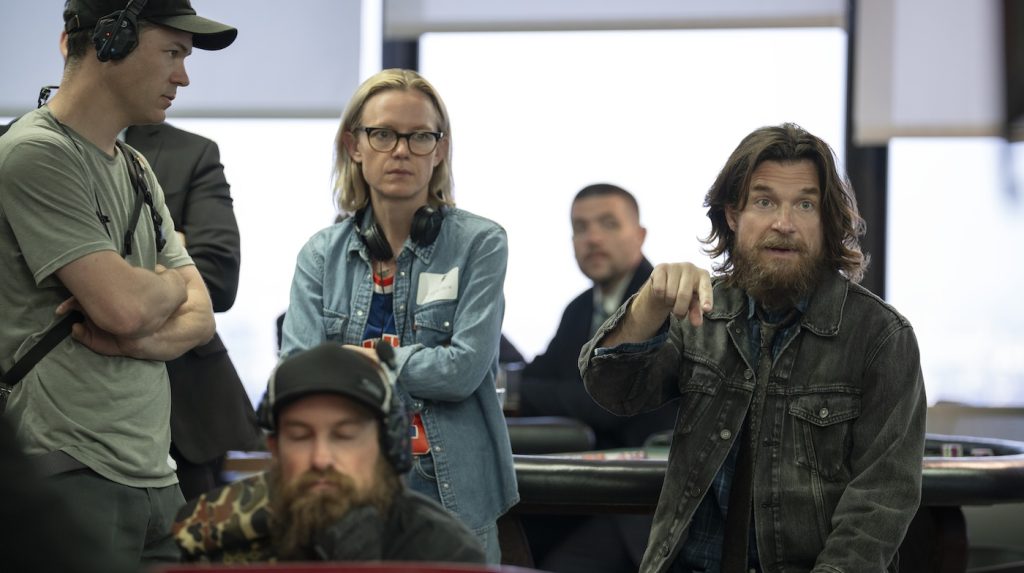
Zach Baylin: For me, it’s much more personal than anything I’ve ever written. We didn’t have bookies chasing us while we were in New York, but a lot of the relationships are drawn very closely from people in my life and Kate’s life. It feels different to have something out there that’s a big expression of things that we’ve been through. I can’t believe we were able to do it on this scale and with the resources we were given. We’re just very proud of it and very interested to hear the conversation around it.
The series captures a distinct slice of New York life, particularly the restaurant and nightlife scenes in Manhattan. Can you walk me through shooting on location in New York?
Baylin: It was essential to us. There was never a conversation that we wouldn’t shoot in New York. We talked in depth with every actor about their character’s New York lives. For example, we talked about Abbey Lee’s character Anna, the bartender—what was her career before she became a bartender? Where would a bartender who worked in a restaurant in the South Street Seaport, who had probably been a model and partied really hard, live? What would her commute be? What grocery store or bodega did she go to? So that when she sits with Roxy [Amaka Okafor] in that park and they have a conversation in episode two [about why she left the Black Rabbit], she’s on her way home from picking up her daily stuff. We wanted that to feel really spot on and for the characters to be people that we recognize and New Yorkers would recognize as just the kind of people you pass on the street every day.
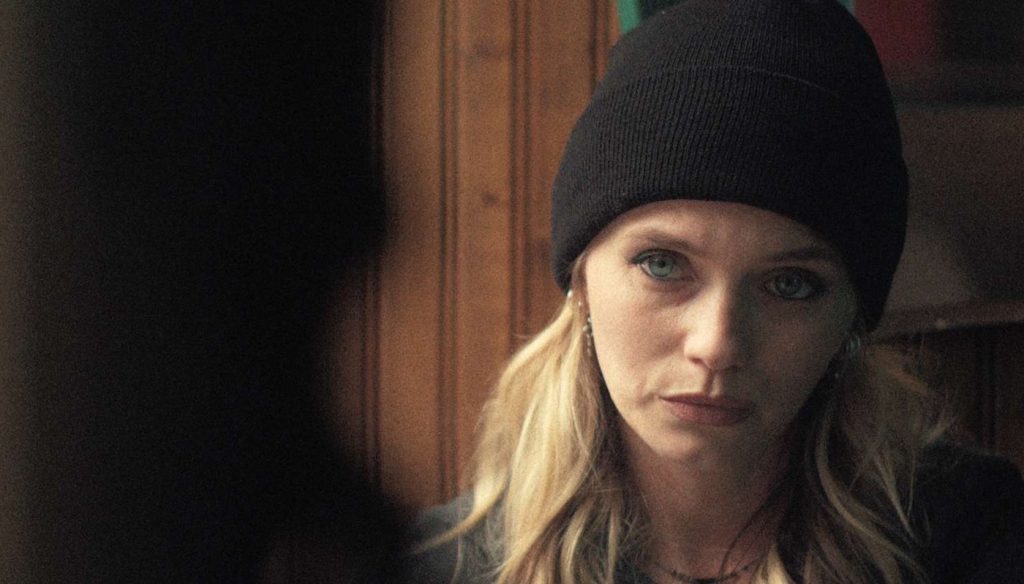
Susman: We wrote to a lot of locations that were very familiar to us. We spent a lot of time at the 10th Street baths and all around the East Village. From the beginning, the crew that we got for our show, almost to a person, was very keyed in—like, ‘Oh, I had lunch at this place,’ or ‘Tompkins Square Park is meaningful to me.’ Everyone on our whole crew felt similarly to us that this felt like a space they wanted to be in and represent. Netflix was an incredibly supportive partner. We had a great location manager [Paul Eskenazi] and line producer [Erica Kay], and everyone just tackled it by asking, ‘How are we going to get these locations and make this feeling real?’
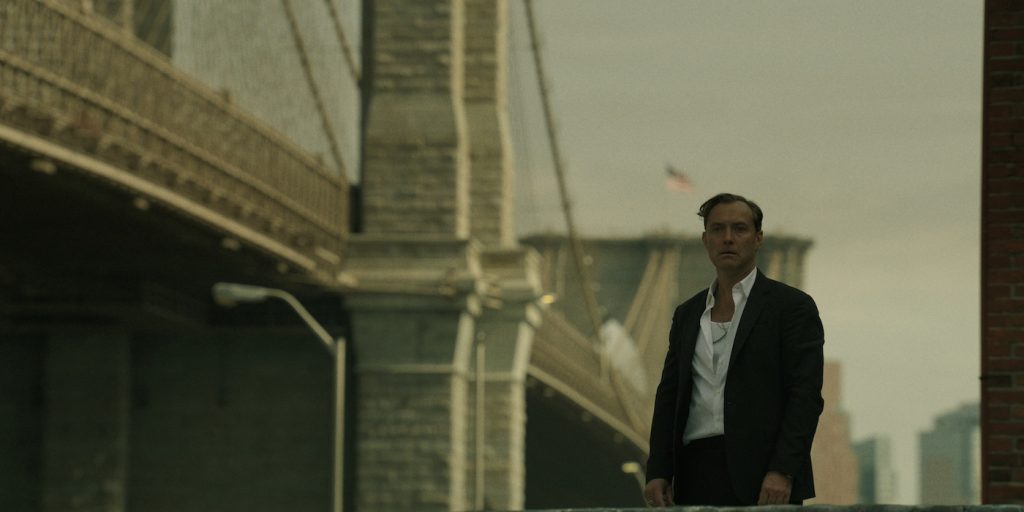
The production design was also really fantastic, especially the Black Rabbit restaurant itself.
Susman: Our production designer, Alex DiGerlando, shared photographs of some of the bars and restaurants that inspired us and informed the story. He immediately got the vibe and location of what the Black Rabbit might be. He found that exterior, found that location in the South Street Seaport, which is one of the oldest buildings—
Baylin: —the oldest wooden restaurant in New York. It predates the Brooklyn Bridge by 100 years. [The real location is the exterior of the Bridge Cafe, on 279 Water Street in the South Street Seaport, which was a saloon in the 1800s called “The Hole in the Wall.” It was also the site of the first known female bouncer, Gallus Mag.]
And the Black Rabbit building is just sitting vacant?
Susman: It’s vacant right now. It’s actually in really bad condition. In the flashback in episode two, when it flashes back to Vince and Jake seeing the space—that’s what it looks like. That’s the actual interior of it.
Baylin: It had been a thousand different restaurants, but it was functioning until Hurricane Sandy, and it got flooded.
Susman: I think it was called The Lighthouse.
What aesthetic were you trying to achieve with the restaurant?
Baylin: We had a very specific aesthetic that we were trying to achieve, which was a three-story corner brick building with the first two floors serving as the restaurant and the third as the upstairs VIP area, set on cobblestone streets. Paul Eskenazi found it, and then Alex [DiGerlando] and Jason Bateman, who directed the first two episodes, really designed what that would become. I’d say too, on the New York thing—we love New York movies. It was really an honor to get to try to make our version of it. We talked about so many movies that are set in New York. Even in episode six, when Vince’s character misses the Chinatown bus because he ends up in a bender at this bar—that bar is called 7B or the Horseshoe Bar, which is on the corner of Tompkins Square Park, which is also the bar that Paul Newman’s character goes to in The Verdict. Sidney Lumet’s movies were also extremely inspirational to us.
Susman: We also spent a decent amount of time in that bar ourselves.
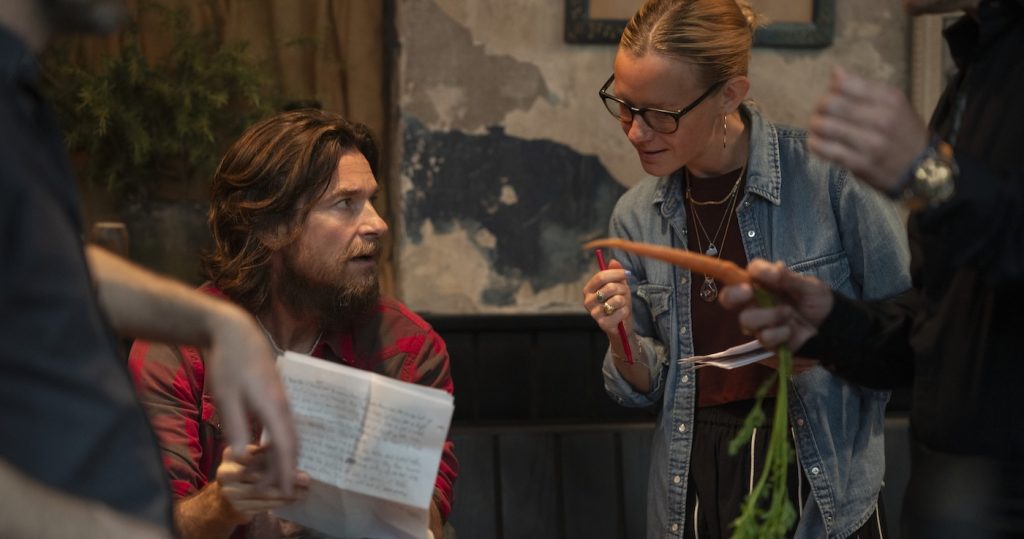
And the exterior of the Black Rabbit—that has some film history too, right?
Baylin: The restaurant exterior is from the end of French Connection when Gene Hackman throws the guy up against the gate on the side of the building. That’s the gate that Vince and the robbers—spoiler—go up at the end of the series. It was really cool to get to sort of play in that arena.
What was the process like working with New York’s film commission and dealing with location permits?
Susman: We were very lucky. In full transparency, it didn’t cross our line of sight that often. Erica Kay, our line producer, and Paul Eskenazi handled that. We got very few nos, including shutting down the Brooklyn Bridge so that Jason could run across it. We had a lot of car chases on the Brooklyn Bridge. I’m sure it was harder than it seemed behind the scenes, but it didn’t rise to the level of making us want to pivot anything.
Baylin: We wrote the first two scripts just before the writers’ strike, and then everything shut down. We found out we were greenlit shortly after the strike, and there wasn’t a ton of production in New York at the time. We felt like we got so lucky with the crew, and people were excited to be working on something that was well-funded. The city and New York production really opened up to us.
You had a lot of local crew?
Baylin: Yeah, everyone really. I was in Local 52—I worked in the props dressing department for years and was based in New York, where I worked on tons of shows. Some of my best friends are department heads. The prop master on Black Rabbit was someone I was an assistant to for a long time. He was the first must-hire when Jason came on—we told him that we knew who the prop master was going to be. [Laughs].
The Black Rabbit restaurant feels incredibly authentic and meticulously designed. Can you talk about building that world?
Baylin: We had tasting menus when we were designing what the menu for the restaurant was going to be. We had rounds of tastings with the chef and working with Amaka, who plays Roxie, to sort of figure out what someone from her heritage would bring into the cuisine of the restaurant that would partner with what Jake and Vince’s idea of what a downtown restaurant might serve, but then bringing in someone who actually knows what they’re doing? We had restaurant consultants who had worked all over New York who built that menu for us and—
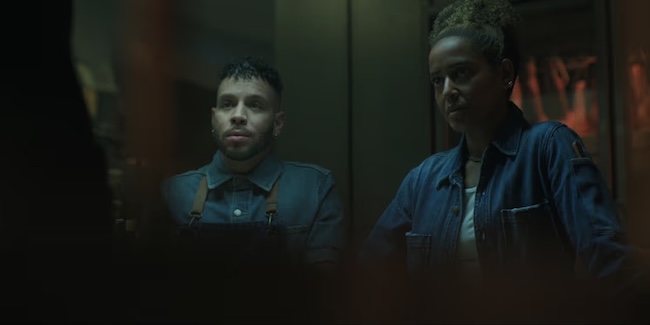
Susman: —and built the kitchen. They really opened a restaurant, truly. The space contributed to everyone’s performance because that place was very vibey—it was a shame that the alcohol behind the bar was not alcohol because everyone wanted to sit and have a drink. It was super evocative.
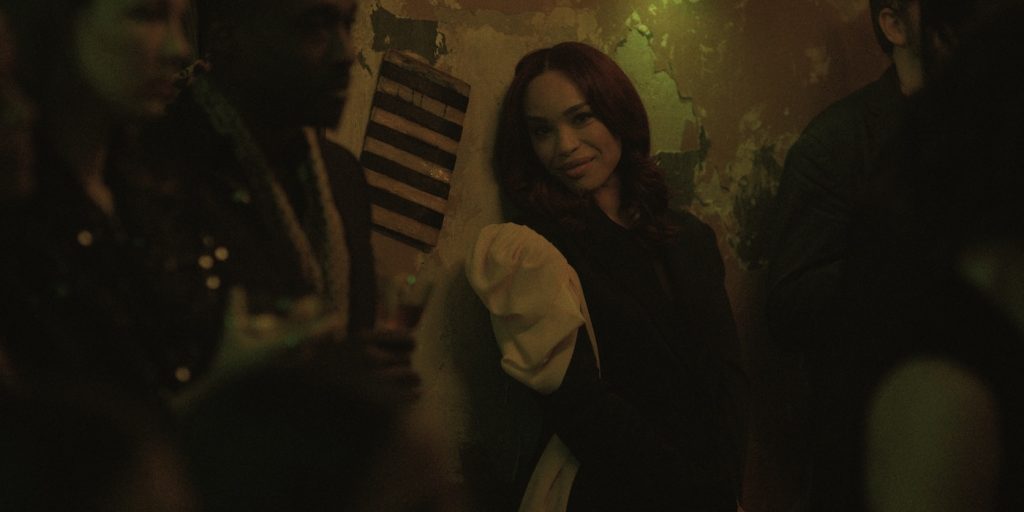
Can you discuss crafting this tragic narrative, not only about Anna, but also about Jake and Vince?
Susman: We always knew it was going to be a tragedy about the brothers’ relationship. But then in terms of telling the story in the world we wanted to live in—that thriller element, something that grabs you by your collar and doesn’t let you go is the kind of stuff that we like to watch. We didn’t want to waste any time doing anything but creating a plot and story, and keeping people watching. That was the scaffolding around what is essentially just a dramatic story about two very damaged, tragic brothers.
Baylin: Someone asked me today if we talked about having a more open-ended ending, and we never did. Even when we pitched it to Jason and Jude, and later to Netflix, it was always going to be a very tragic and bittersweet story. But hopefully, there’s this relief at the end that we feel that’s not the fabricated change that a character goes through, where everything is different, and they can achieve everything they ever wanted. The steps that Jake takes at the end of the show felt very human to us—a human scale of what moving on might feel like. That was always the tone we wanted to end the show with, which was something that felt heartbreaking, but that made the normal struggles in people’s lives feel somewhat operatic. That’s how we talked about it in the room and with Jason and Jude. I just think they’re so good in the show, and they gave so much and really pushed the characters further than we had initially had on the page. We rewrote constantly with them, seeing what they were doing on set. Kate and I wrote basically all of episodes seven and eight in one of the booths at Black Rabbit. We got to see how they embodied those characters and then try to write to that.
Susman: We got to write to the real love that those guys have. You can see it in Jude’s and Jason’s performances. Against all odds, they really love each other.
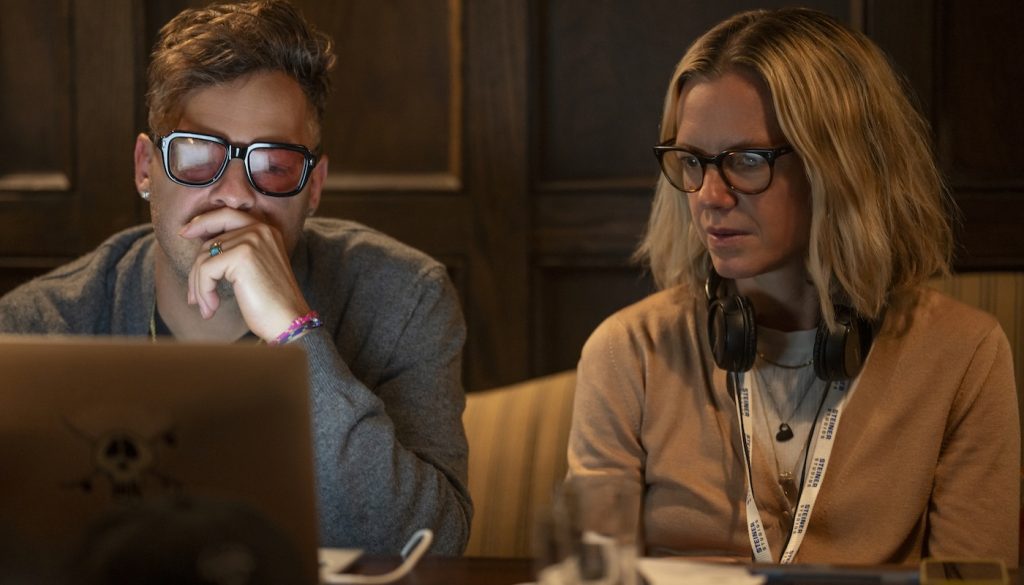
Black Rabbit is streaming on Netflix.
Featured image: Black Rabbit. (L to R) Jason Bateman as Vince, Jude Law as Jake in episode 108 of Black Rabbit. Cr. Courtesy of Netflix © 2025


